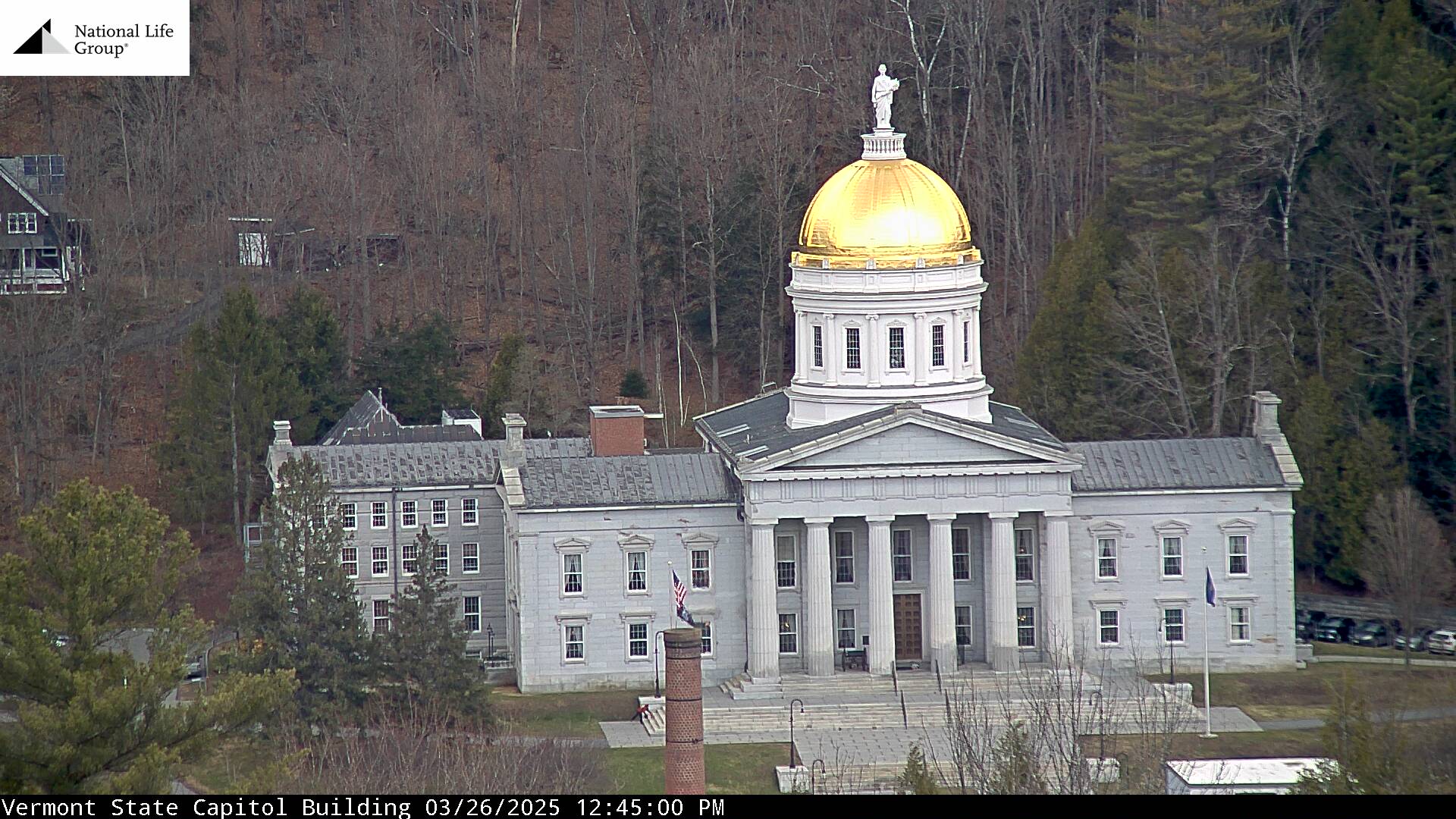Montpelier, VT Weather Cams
Vermont State Capitol Building Cam

Camels Hump Cam

Murray Hill Cam

Montpelier, Vermont: A Journey Through Time in the Nation’s Smallest Capital
Montpelier, VT Weather Cams. Nestled in the picturesque hills of central Vermont, Montpelier stands as a testament to the state’s rich history and enduring spirit. From its early days as a frontier settlement to its current role as the nation’s smallest capital city, Montpelier’s story is one of resilience, innovation, and community.
Early Settlement and Growth: The 18th and 19th Centuries
The history of Montpelier dates back to the late 18th century when European settlers began to establish homesteads in the area. The town’s name, derived from Montpellier, France, reflects the French heritage of some of its early settlers. In 1781, Montpelier was officially chartered as a town, making it one of the oldest in Vermont.
Montpelier’s early years were marked by modest growth and agricultural development. The fertile soil and abundant waterways attracted farmers and millers, who built gristmills, sawmills, and other industries along the banks of the Winooski River. The town’s central location also made it a hub for trade and commerce, with stagecoach routes connecting Montpelier to other settlements in Vermont and beyond.
Rise to Capital City: The 19th Century
Montpelier’s ascent to prominence began in 1805 when the Vermont General Assembly selected the town as the state capital, replacing Windsor. The decision was controversial, as many residents of other towns vied for the honor, but Montpelier’s central location and relatively neutral political climate ultimately won out.
The designation as capital brought new opportunities and challenges to Montpelier. The construction of the State House, completed in 1838, transformed the town’s skyline and solidified its status as the political center of Vermont. The arrival of state government officials, legislators, and bureaucrats brought economic growth and cultural enrichment to Montpelier, fueling the development of businesses, schools, and civic institutions.
Industrialization and Modernization: The 19th and Early 20th Centuries
The 19th century saw Montpelier’s transformation from a rural village to a bustling industrial town. The completion of the Central Vermont Railroad in 1849 provided a vital link to regional markets, facilitating the transportation of goods and people. Factories sprung up along the riverbanks, producing goods such as granite, lumber, and textiles, which were shipped throughout New England and beyond.
Granite quarrying became a major industry in Montpelier during this period, fueled by the abundance of high-quality granite in the surrounding hills. The Barre-Montpelier area became known as the “Granite Center of the World,” supplying stone for landmarks such as the New York Public Library and the Vermont State House.
The early 20th century brought further modernization to Montpelier, with the advent of electricity, telephones, and automobiles. The town’s population grew steadily as new residents flocked to the capital city in search of employment and opportunity.
The 20th Century and Beyond: Challenges and Renewal
The mid-20th century brought challenges to Montpelier as industrialization declined and suburbanization reshaped the American landscape. Many factories closed, and downtown businesses struggled to compete with larger retailers in neighboring cities.
However, Montpelier’s tight-knit community and historic charm proved resilient in the face of change. Efforts to preserve the town’s historic character and promote economic revitalization gained momentum in the latter half of the 20th century. The creation of the Montpelier Historic District in 1973 and the implementation of downtown revitalization initiatives helped to preserve historic buildings and attract new businesses and residents to the area.
In recent decades, Montpelier has embraced its identity as a cultural and recreational destination, drawing visitors with its vibrant arts scene, outdoor recreational opportunities, and eclectic dining options. The city’s commitment to sustainability and environmental stewardship has earned it recognition as one of the greenest capital cities in the United States.
Montpelier Today: A Beacon of Vermont’s Spirit
Today, Montpelier stands as a beacon of Vermont’s spirit, blending a rich history with a forward-thinking outlook. The city’s compact downtown area is home to an array of boutiques, galleries, and eateries, while its surrounding hills offer ample opportunities for outdoor adventure.
The Vermont State House remains the centerpiece of Montpelier’s landscape, a symbol of the state’s commitment to democracy and civic engagement. The city’s cultural institutions, including the Vermont Historical Society and the T.W. Wood Gallery, celebrate Vermont’s heritage and artistic legacy.
Montpelier’s residents, known for their independent spirit and civic engagement, continue to shape the city’s future through community activism, volunteerism, and innovative initiatives. The town’s small size and strong sense of community foster a close-knit environment where neighbors know each other by name and look out for one another.
As Montpelier looks to the future, it remains rooted in its past, honoring the traditions and values that have shaped its identity for centuries. With a blend of history, innovation, and community spirit, Montpelier continues to inspire residents and visitors alike, embodying the essence of Vermont’s unique character.
For more information, visit the official Montpelier, Vermont website.
